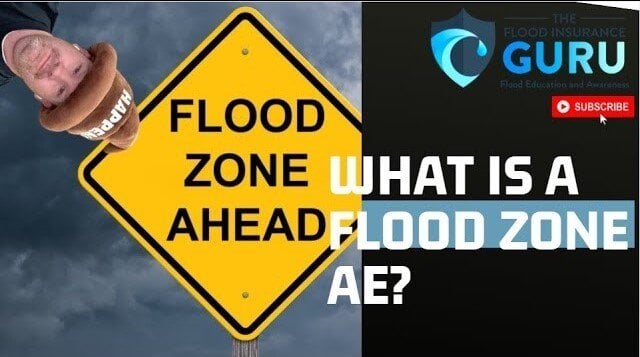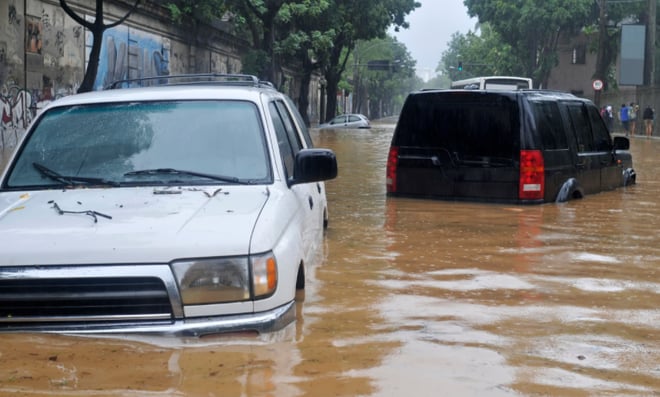Topics:
Search for topics or resources
Enter your search below and hit enter or click the search icon.
July 12th, 2023
4 min read
By Chris Greene

In today's video, we'll talk about one of the zones where flooding can really hurt and understand what flood zone AE. In this video, we will discuss a specific area vulnerable to flooding and gain knowledge about the flood zone AE.
Flood zone AE is also known as a special flood hazard area since this is generally a zone where flood risks are very high and flooding can happen once every 100 years. This is why it's commonly known as well as the 100-year flood zone. This is strictly based on research on probability however this doesn't really reflect how disasters work so it still differs.
In a time where flooding can happen anytime and anywhere, however, this is still a great reference since the 100-year flood zone is the bigger picture than the National Flood Insurance Program (NFIP) and FEMA. It is important to note that flood zones no longer determine rates with the National Flood Insurance Program.

In order to safeguard the value, structure, and overall integrity of the property in the event of a flood disaster, both the federal government and your mortgage provider mandate that properties in this area must have a flood insurance policy in place. This crucial requirement ensures that adequate protection and preservation measures are in effect to mitigate the potential damages caused by flooding.
These zones are determined by the flood insurance rate map (FIRM) set by FEMA to see if the structures of the properties can keep up with the possible flood risk in the area. It's important that the flood map uses the data on chance of flooding in the area, the base flood elevation of the community or the property, and as mentioned before the probability of a flood in the event that there's heavy rainfall or somewhere along those lines.

Additionally, other than the mandatory flood insurance from the federal government, you can also expect that in these high-risk areas, flood zone insurance premiums are also higher compared to low-risk areas. At least they were before risk rating 2.0 was released on October 1, 2021. If your active flood insurance in a low-risk flood zone is around $700 to $1000, you can expect that your flood insurance rates in high-risk zones will be around $2000 or even more. This generally is due to the flood damage that the insurance needs to mitigate in order to avoid future complications considering the risk of flooding in the community or area.

You may avoid this by using an elevation certificate to prove that you have a lower risk for flooding compared to the area around it. This elevation certificate should be signed and filled in by a licensed surveyor or a professional engineer. You can learn more on elevation certificates by checking out our podcast below:
If you have any questions on flood zone designation, how to get flood zone changed, or what your flood insurance options are, give us a call by clicking the links below.
Are you ready to put time and money back in your life by simplifying flood insurance?
Flood insurance through the National Flood Insurance Program (NFIP) is a federal program administered by the Federal Emergency Management Agency (FEMA). It provides affordable flood insurance to homeowners, renters, and business owners in participating communities.
The NFIP aims to reduce the impact of flooding on individuals and communities by providing financial protection against flood damage. Traditional homeowner's insurance policies do not typically cover flood-related damages, so flood insurance through the NFIP is an important option for those at risk of flooding.
To obtain flood insurance through the NFIP, individuals must reside in a community that participates in the program. These communities have agreed to adopt and enforce floodplain management regulations to reduce the risk of flood damage.
The coverage offered by the NFIP includes building coverage and contents coverage. Building coverage can cover the physical structure of a property, including the foundation, walls, and electrical system. Contents coverage can cover personal belongings, such as furniture, appliances, and clothing.
It's worth noting that the coverage provided by flood insurance through the NFIP has certain limits and exclusions. Additionally, there is typically a waiting period before the coverage becomes effective, so it's important to plan ahead and not wait until flooding is imminent to obtain coverage.
Overall, flood insurance through the National Flood Insurance Program can provide peace of mind and financial protection in the event of a flood, helping individuals and communities recover more quickly and effectively from flood damage.
On a residential property coverage is up to $250,000. on the building is available and coverage up to $100,000 on contents The National Flood Insurance Program (NFIP) is a government-run program in the United States that provides flood insurance to property owners who reside in participating communities. The NFIP aims to reduce the impact of flooding on individuals and communities by providing affordable flood insurance, encouraging the adoption of floodplain management regulations, and promoting the mitigation of flood risks.
Flood insurance through the NFIP is available for residential and commercial properties, including buildings and their contents. It covers physical damage caused by flooding, including damage to the structure, electrical and plumbing systems, HVAC systems, appliances, and personal belongings.
Now let's look at private flood insurance
What is private flood insurance?
Private flood insurance is an insurance policy that individuals can purchase from private insurance companies to cover damages caused by flooding.
Unlike the National Flood Insurance Program (NFIP), which is a federal government program, private flood insurance is offered by private insurers and can provide coverage above and beyond what is offered by the NFIP. Some private flood insurance policies may also offer additional coverage options not provided by the NFIP, such as coverage for loss of use or additional living expenses.
Private flood insurance premiums can vary depending on factors such as location, flood risk, and coverage options selected. Private flood insurance refers to an insurance policy that is provided by private insurance companies and offers coverage for damages caused by flooding events. It is an alternative to the National Flood Insurance Program (NFIP), which is a government-backed flood insurance program in the United States.
Private flood insurance policies typically offer similar coverage to the NFIP, including protection for a property's structure and contents against flood-related damages. However, private policies may offer additional coverage options, higher coverage limits, and more flexible terms compared to the NFIP.
Private flood insurance is available to homeowners, renters, and businesses in areas prone to flooding. The cost of private flood insurance can vary depending on factors such as the property's location, flood risk, and coverage limits desired.
Private flood insurance provides an alternative choice for property owners who may prefer customized coverage options or lower premiums compared to the NFIP. However, it is important to note that private flood insurance policies may not be available or suitable for all properties, and individuals should carefully compare coverage and costs before making a decision.
Download Guide to Flood Zone AE
Topics: